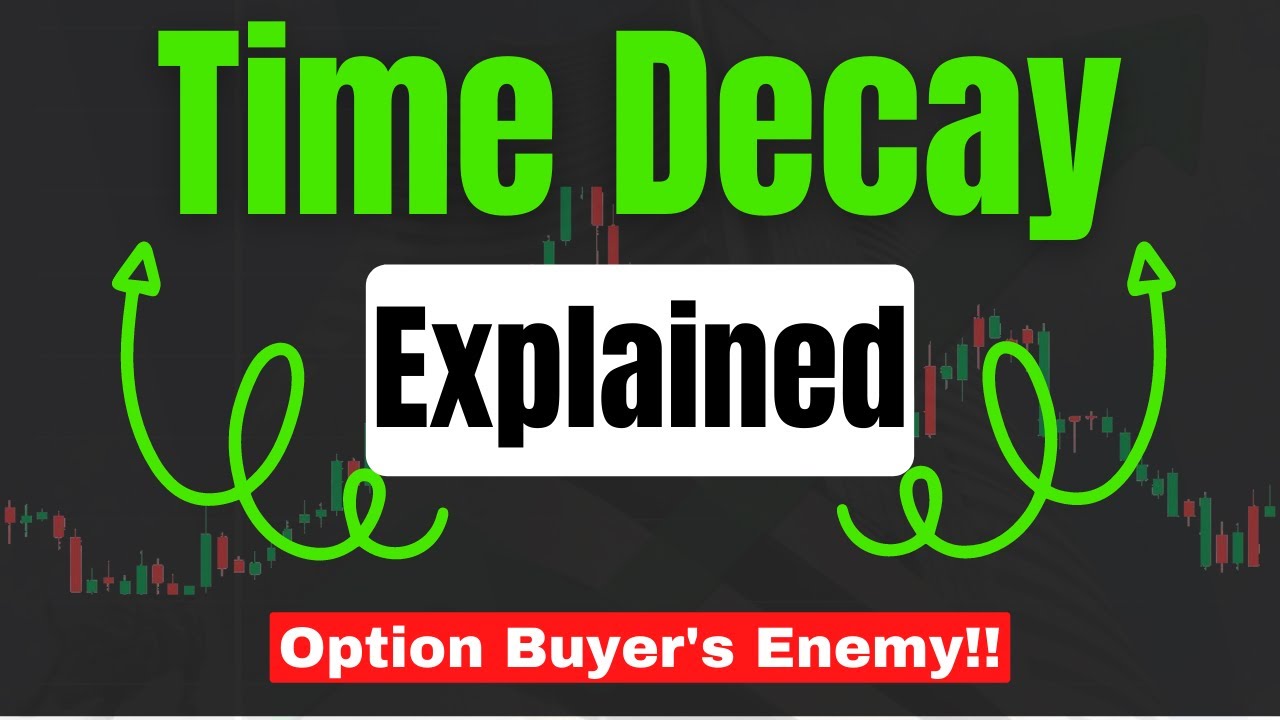Welcome Back to My Blog!
Friends, as you know, have started a playlist that covers the vocabulary for the stock market. In these videos, we quickly explain some of the most important words in the stock market. Today we will discuss ** Time Decay ** – a word that is often heard in alternative trade. Many people talk about maturity, but what is it? Let’s dive into it.
If there are any stock market conditions you want to cover me, please mention them in the comments!
Understanding options Premium:
Before discussing the maturity, we must first understand what ** alternative premium ** stock.
The prize for an alternative consists of two main components:
1. Intrinsic Value
2. Time Value
With these two components, you can calculate the overall option premium.
Intrinsic Value:
The internal value refers to ** Moneyyness ** of an option, which means that it is in money (ITM), in money (ATM) or out of money (OTM) **. Here’s a quick breakdown:
– ** Ring options: ** Internal value depends on whether or not the stock price is above the strike price or not.
– ** Set alternative: ** Internal value depends on whether the share price is below the strike price.
For example:
– If a stock trades to ** £ 100 ** and you have a ** conversation option with £ 110 strike price **, it’s OTM (out of money), with ** zero internal value **.
– If the stock goes to ** £ 120 **, your ** ** will have an internal value ** £ 10 ** (120-110) on 110 call options.
– Similarly, in a ** put option **, the internal value increases when the stock price decreases with the strike price.
What is time maturity?
Now that we understand intrinsic value, let’s discuss time value.
Time value is the additional amount an option buyer pays due to the time left until expiration. This is where **time decay (Theta decay)** comes into play.
To understand time decay, consider this example:
- Imagine I ask you, Where will Nifty be in 5 years?
- It’s difficult to predict.
- Where will it be in 1 year?**
- Slightly easier, but still uncertain.
- Where will it be in 1 month?**
- A smaller range of predictions.
- Where will it be in 1 day?**
- Much easier to predict!
This illustrates that as **time decreases, uncertainty decreases**. For options sellers, **more uncertainty means higher risk**, which is why they charge a higher premium for longer expiries.
Key Takeaway: The closer an option to expiry, the less time value it holds, leading to a decline in its price.
How Time Decay Works
Time Radiation is a ** with a rapid speed ** as a termination approach. What happens here:
– If a ** alternative has 30 days ** to complete, the time price ** is gradually **.
– If there are 7 days ** left in a ** option, the time price is reduced ** Sharp **.
– If a ** alternative is 1 day left **, the time rates ** very early **.
Why is the match
For option providers, time matters ** are favorable ** because they lose their profit values as profits. For the option buyers, however, the maturity is ** harmful ** because the value of the alternative decreases over time.
- On day of outlet, the time value is zero:
- OTM option Get useless (Premium turns zero).
- ITM option just hold their internal value .
Final thoughts
I hope this article affects you time, its effect on alternatives and how it affects pricing. If you found this explanation useful, don’t forget to record ** on my blog for more educational material, comment and subscribe!
Thank you for reading, I will see you next time!
